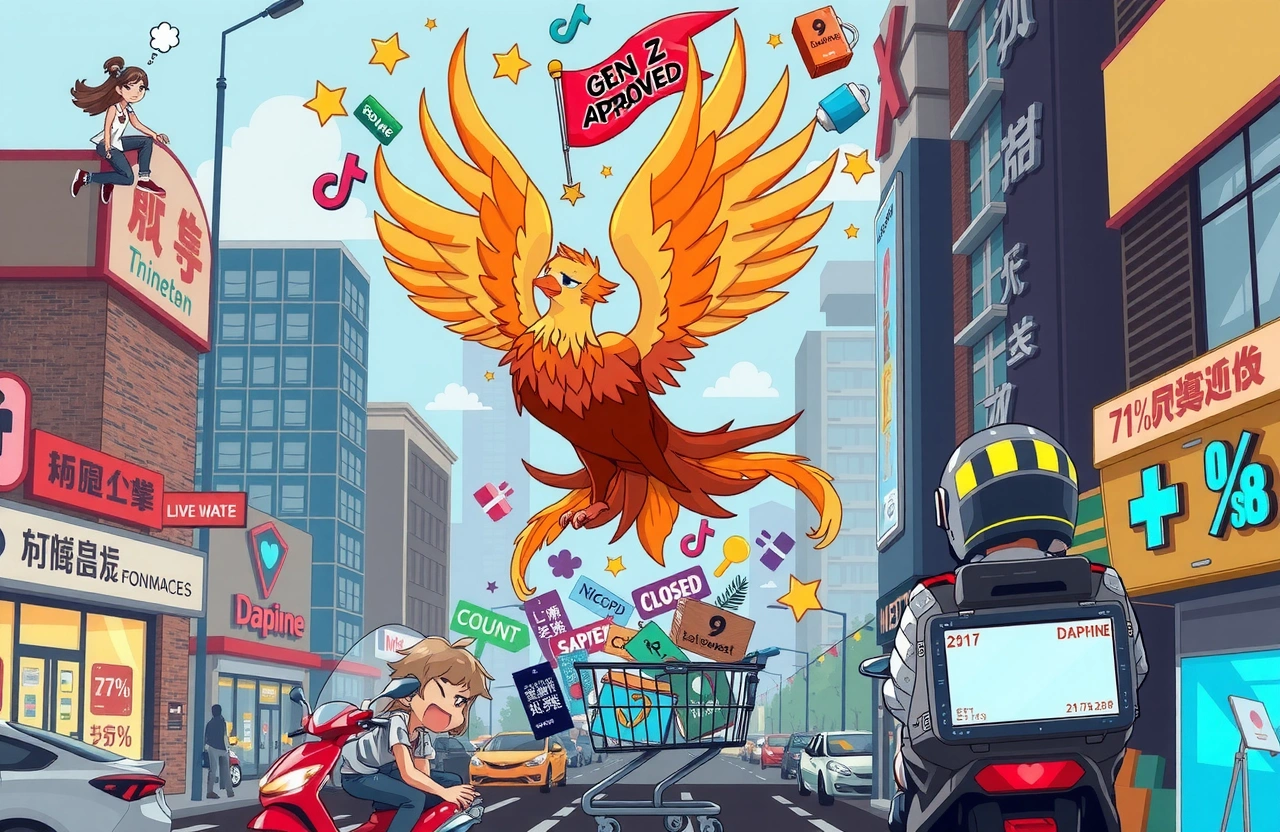The Silent Resurgence
While fast-fashion giants stumble, a curious phenomenon unfolds in China’s retail landscape: Heritage brands declared irrelevant just years ago now dominate Gen Z’s shopping carts. When BLACKPINK’s Jennie wore Daphne boots during Seoul concerts in 2023, fans didn’t just cheer—they rushed to buy what was once deemed ‘mom shoes’. This isn’t nostalgia marketing; it’s a full-scale reinvention where faded labels like La Chapelle, Warrior, and Jeanswest now outpace digital natives. Their secret? Ruthless digital adaptation, hyper-localized pricing, and abandoning yesterday’s playbook entirely.
Key Takeaway
- Heritage brands achieve 200-400% growth by terminating physical expansion to prioritize TikTok/Taobao ecosystems
- Gen Z-driven design overhauls slashed 80% of legacy SKUs while doubling R&D speed
- Price anchoring in tier-3 cities creates ‘aspirational accessibility’ for budget-conscious youth
- ‘Flexible manufacturing’ allows real-time production based on live-stream demand signals
- K-pop collabs generate 30x social media amplification versus traditional celebrity endorsements
The Rebirth Blueprint
From Boardrooms to ByteDance
Daphne’s transformation reveals phase one of the revival playbook. After shuttering 6800+ stores between 2015-2020, the shoemaker reallocated 90% of its budget to Douyin (TikTok China), establishing 273 dedicated livestream channels. ByteDance data shows their daily broadcasts reached 18 million viewers by Q4 2023—more than Nike’s China viewership. Crucially, designers monitored comments to discontinue unpopular styles within 48 hours while accelerating trending designs. This demand-pull system helped launch 2,000 new SKUs in 2023 alone—outpacing Shein’s notorious turnover.
Product manager Luo Min (罗敏) explains: ‘We treat every scroll as a focus group. When teens called our boots ‘village wedding shoes’, we hired Seoul-based stylists to rework silhouettes.’ The approach worked: Gen Z now comprises 76% of Daphne customers, driving 71% net profit growth last year.
Secondary Cities, Primary Profits
Meanwhile, Jeanswest executed phase two: geographic repositioning. After retreating from glitzy Shanghai malls, they flooded county-level markets with ¥99 fleece hoodies and relaxed-fit jeans. In Sichuan’s Luzhou, 23-year-old salesman Wang Hui notes: ‘Kids love our obscure collaborations with Douyin animators—they cost less than unbranded market stalls.’ The tier-3 pivot proved genius; per Alimama, non-metro shoppers delivered 84% of Jeanswest’s ¥6B 2024 revenue.
Market Mechanics Behind Revival Cycles
Why do heritage brands oscillate between near-extinction and dominance? Industry analyst Zhang Wei (张伟) identifies three disruption waves:
- 2006-2015: Physical retail collapsed as taobao enabled micro-brands
- 2016-2021: Fast-fashion (Zara/Uniqlo) cannibalized mid-market players
- 2022-present: Social commerce resurrected adaptable dinosaurs
‘Successful survivors master channel arbitrage,’ Zhang observes. ‘They exploit Gen Z’s perception gaps—using their history as authenticity markers while operating like digital startups.’
Net Influencers’ Reinvention Gambit
Parallel to brands, China’s original clothing influencers execute their own metamorphosis. Rebecca Zhang Dayi (张大奕) closed her decade-old ‘Wu Huanxi’ shop last year citing unsustainable 67% return rates—then stealth-launched premium label THE VEVER within weeks.
The Cicada Shedding Strategy
Zhang’s blueprint reveals four evolved tactics for influencer brands:
- Material upgrades replacing polyester with Mulberry silk and Mongolian cashmere for margin expansion
- Globalized sourcing shown through Paris-set photography sessions
- ASP increases averaging 30-50% vs original lines
- Deliberate IP separation from founder controversies
The formula works: THE VEVER now serves 48,000 monthly buyers—a 210% YoY increase.
The New Competitive Calculus
These phoenix brands rewrite retail mathematics. Where Uniqlo needs 18 months for new product development, Belle International leverages AI trend-forecasting to shrink design cycles to 7 days. At their Chengdu flagship, VR foot-mapping and same-day customization generate ¥5M monthly sales—equivalent to 8 traditional stores.
‘Contrary to assumptions, heritage provides advantage,’ insists Professor Li Qian of Fudan University. ‘Their decades of manufacturing relationships enable radical flexibility—Warrior can produce new sneaker designs in 72 hours when trends shift.’ This operational agility lets veterans outmaneuver capital-rich but inexperienced newcomers.
Beyond Nostalgia
Contrary to media narratives, these revivals transcend throwback sentiment. Gen Z consumers—facing economic headwinds—actively seek ‘frictionless value’: trustworthy quality at accessible prices without sustainability guilt. Warrior’s guochao sneakers succeed by blending national pride with environmental action—each pair uses recycled rubber from 5kg tires.
For investors, the implications are profound. After resuscitating Belle International through tech investments, Gao Zhen (高瓴) partner David Liu notes: ‘Resilient brands demonstrate omnichannel plasticity. They monetize physical presence experientially while deriving profits digitally.’
The lesson transcends fashion: Legacy businesses shouldn’t bury their history—but redeploy it. Catch Gen Z scrolling? Show them how yesterday’s ‘uncool’ integrates into tomorrow’s aesthetic—with platform-native velocity.
Inventory Tip: Target brands with sub-30 day supply chains monitoring Douyin trends. Their agile production allows riding micro-trends before competitors react—proving grandma’s favorite labels now move faster than disruptors.




